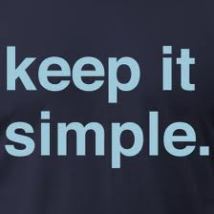Monthly Archives: March 2012
Habits of True Strategic Thinkers
Today I ran across the article 6 Habits of True Stratgic Thinkers by Paul J.H. Schoemaker. In this article he list:
- Anticipate
- Think Critically
- Interpret
- Decide
- Align
- Learn
as the six things todays true strategic thinkers all do well.
In my recent post Be Extraordinary I talked about how most of the greats have repeatedly stated that commitment to practice, not a natural skill determined their success. If you desire to be the top in your chosen profession you need to immerse yourself and practice everyday….In Schoemaker’s summary paragraph he says, “no one is born a black belt in all these 6 different skills. But they can be taught and whatever gaps exist in your skill set can be filled in”.
In reference to Learn he mentions, “As your company grows, honest feedback is harder and harder to come by. You have to do what you can to keep it coming”. To me this is screaming put your ego aside as we all make mistakes with well intended strategic moves.
If you hold a position of a strategic thinker for your organization I would recommend you read Schoemaker’s full article
http://www.inc.com/paul-schoemaker/6-Habits-of-Strategic-Thinkers.html
The Difference is just a little bit
 The Difference is just a little bit, but it’s the difference that counts.
The Difference is just a little bit, but it’s the difference that counts.
Do you know who Bobby Gates and D.J. Trahan are?
Gates 3 putted missing a 6 foot putt on his 5,856th out of 5,857 strokes on the 2011 PGA tour. Trahan made a 22 foot putt on his final 6,434th stroke of the 2011 tour. Trahan finished 125th on the money list – that last spot with full membership on the 2012 tour, while Gates finished 126th. The smallest of things we do might be what makes the biggest difference.
Now don’t go feeling to sorry for the young Mr. Gates he did win $666,735 on the 2011 tour and only a couple of months later he quickly rebounded and finished in the top 25 at Q-School to earn his spot back on the 2012 tour.
It is said about Q-School – It test your sanity as much as your swing. You don’t so much win and you endure the dreaded Q-School.
In sales you’re going to have some near misses and how you bounce back has everything to do with how well you’re prepared to succeed.
In my DIFFERENCE MAKERS training session we do a fun exercise with the golf iron of choice in the hands of one of your salespeople and see how prepared they are when it’s time to execute their approach shot (close the deal).
Become Extraordinary
Do you strive to be an extraordinary salesperson? No one starts there but with practice, more practice, and patience you can become extraordinary.
There are far more stories of regular people becoming extraordinary through practice than there are of extraordinarily gifted people doing nothing and remaining extraordinary. If you want to deliver excellent sales presentations you have to put yourself in a position to present with frequency. True masters in any given field tend to have performed their specialized skills 1000’s of times. Most of the greats have repeatedly stated that commitment to practice, not a natural skill determined their success.
So what does all this mean? If you desire to be the top in your chosen profession you need to immerse yourself and practice everyday.
